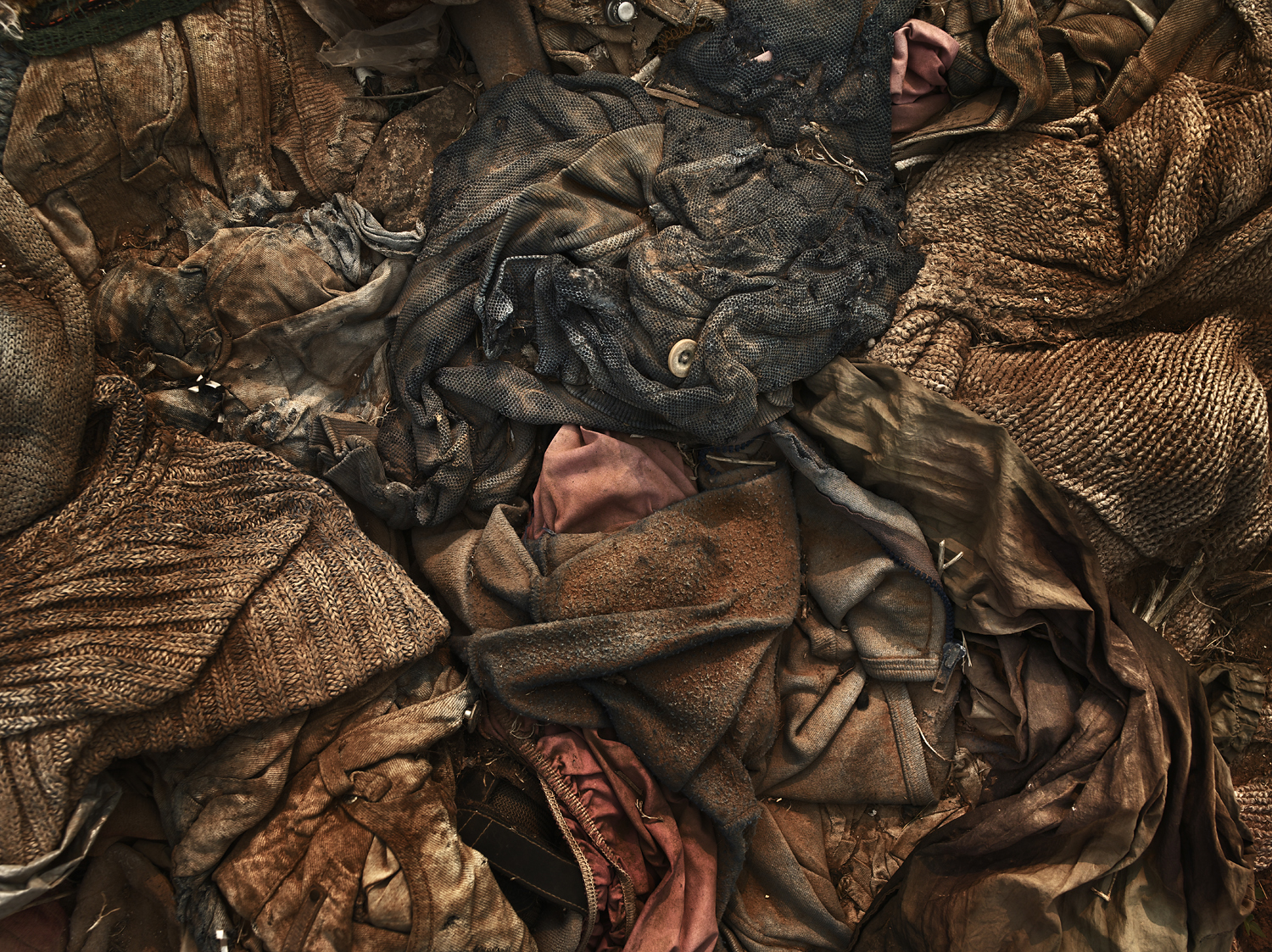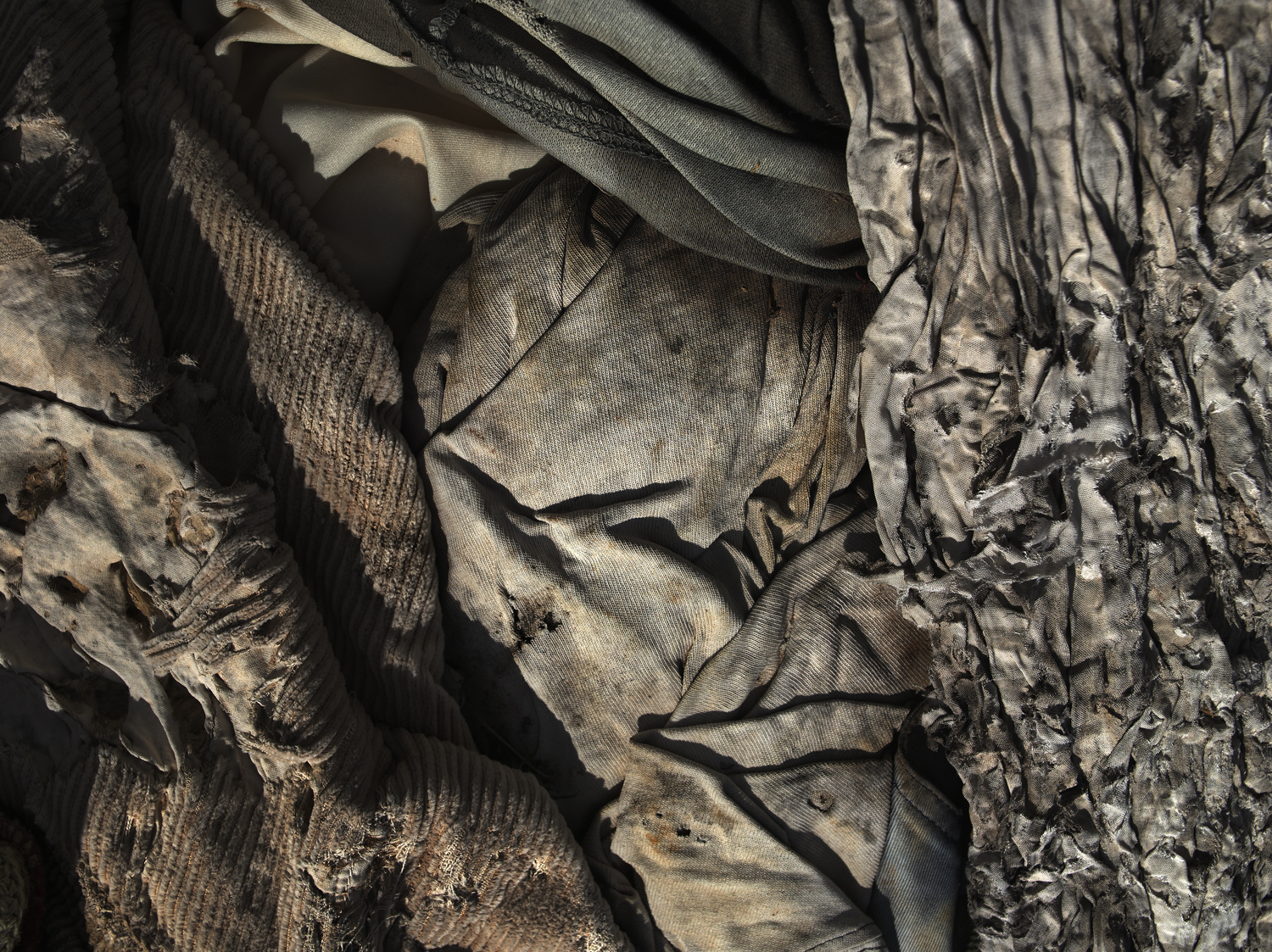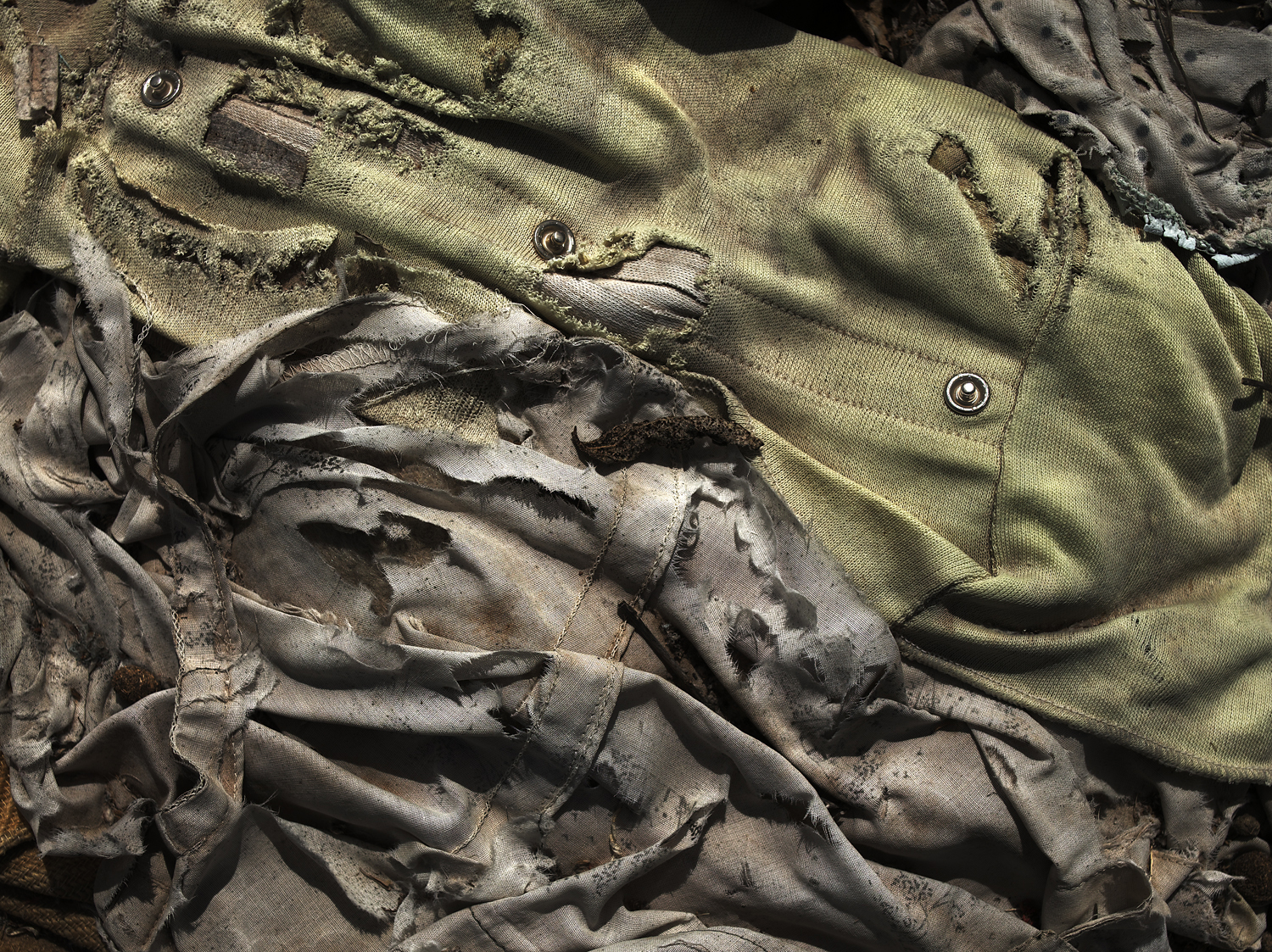
Though he’s spent over a decade photographing at-risk landscapes, some of the most unique topography photographer David Zimmerman has seen is found in the folds of fabric.
Zimmerman, a landscape photographer based in New Mexico and New York, began his project Last Refuge, in which he photographed piles of clothing and remains from an off-the-grid community, almost by chance. As the economy took its toll on broad swaths of American life, Zimmerman increasingly saw groups of people who had either lost their jobs or houses, and were, as the photographer describes, “increasingly desperate to survive.” These aren’t drifters who might be expected to live a transient lifestyle, he says, but teachers, firefighters, musicians and other blue and white-collar professionals.
Though sleeping on out-of-the-way dirt roads and parking lots is nothing new for Zimmerman—he’s lived and worked out of his camper truck while on the road, throughout 15 years of making images—the increasing number of people doing the same thing caught his attention. “It really startled me, to be honest with you,” Zimmerman says, despite having read countless stories of similar communities who were often functioning without electricity or running water. “It didn’t sink in entirely what [was] going on out there, until I saw it for myself.”
As Zimmerman spent time talking to and even photographing members of these marginalized communities throughout the American southwest, it wasn’t their portraits or their poverty that resonated with him in a visual sense. Rather, it was their clothing. “Whether it’s [being] homeless, or lacking a car,” Zimmerman says, “the clothes end up being the very last thing that you and I and they will own. When it absolutely becomes desperate, that’s the final thing that we will own.”
And so the piles of leather jackets, sweaters and coats—found at a 20-person community in northwestern New Mexico—form a descriptive landscape of their own. The entire series is actually shot on the roof of one man’s house, a retired firefighter in his seventies that came to live out in the desert about 25 years ago. He built his shelter underground, and used abandoned clothing to insulate the “roof” of the structure which now litters the desert floor.
Isolated from their surroundings as well as their former owners, the images of clothing are stark reminders of life on a subsistence level, and seem to encapsulate the difficult trajectory of the lives of their owners in their tattered seams and frayed edges. So what began during trips to photograph the natural landscape morphed into a project spent documenting its human counterpart—“the human aspect of the landscape is just as important for me as the physical landscape itself,” Zimmerman says. Last Refuge becomes a sort of typology of different textiles representing a human “dilemma,” as the photographer calls it, as well as a visually isolated reminder of what’s left to lose. “That’s how it spoke to me, as opposed to just being about one person,” Zimmerman adds. “It was a very big problem, a nationwide problem.”
Last Refuge is on display at Sous Les Etoiles Gallery in New York from Dec. 8-Jan. 28.
David Zimmerman was recently shortlisted for the Terry O’Neill Tag Award, and won the Sony World Photography Awards L’Iris D’or Grand Prize in 2009. More of his work can be seen here.








More Must-Reads from TIME
- Donald Trump Is TIME's 2024 Person of the Year
- Why We Chose Trump as Person of the Year
- Is Intermittent Fasting Good or Bad for You?
- The 100 Must-Read Books of 2024
- The 20 Best Christmas TV Episodes
- Column: If Optimism Feels Ridiculous Now, Try Hope
- The Future of Climate Action Is Trade Policy
- Merle Bombardieri Is Helping People Make the Baby Decision
Contact us at letters@time.com